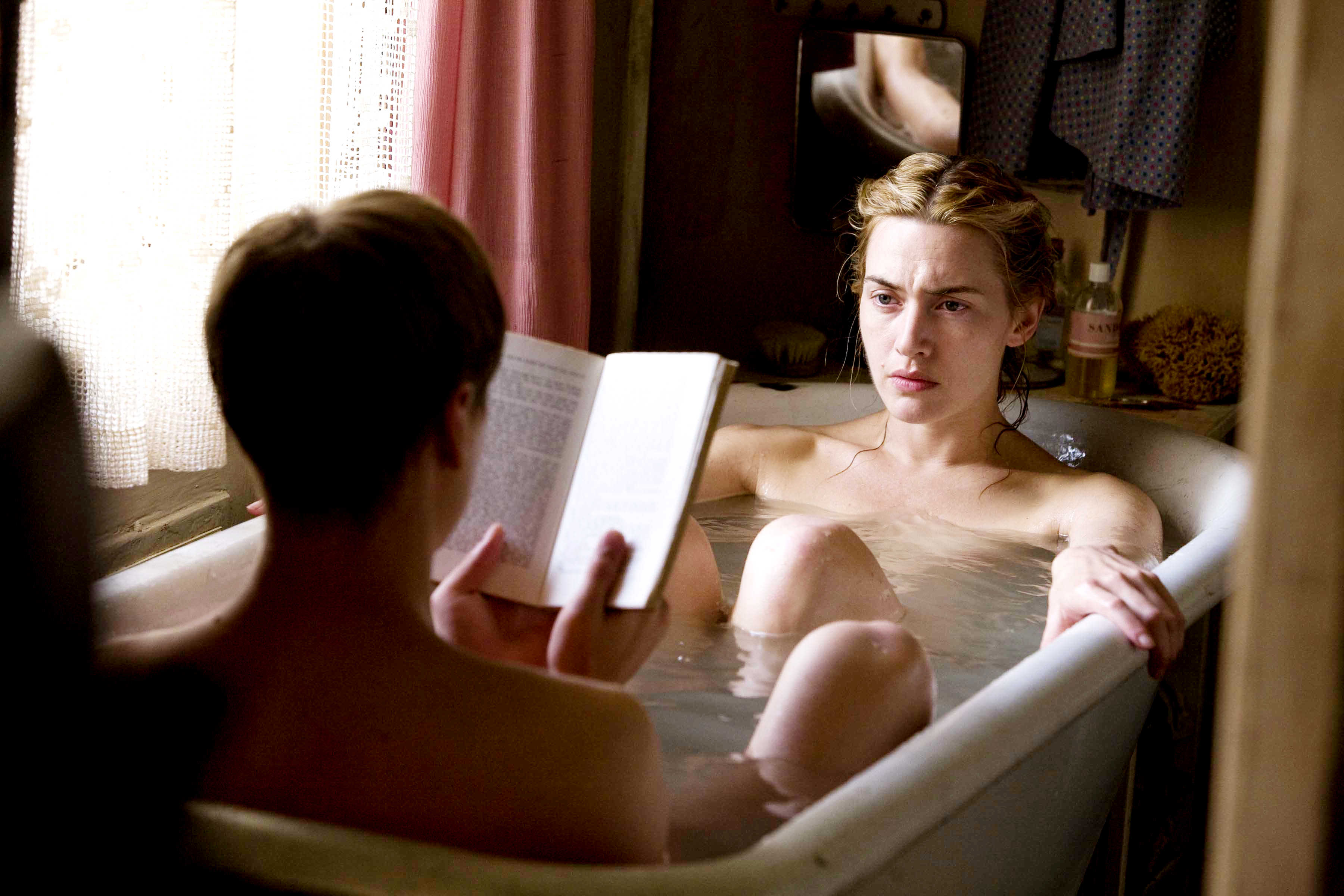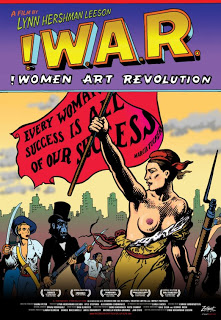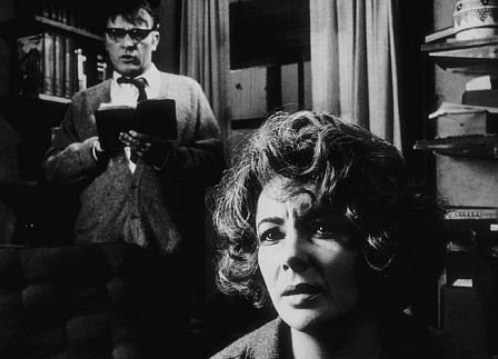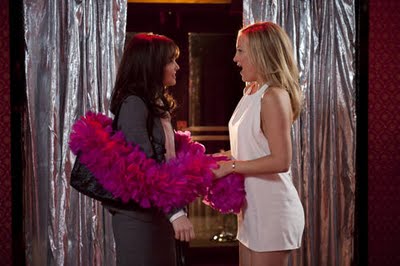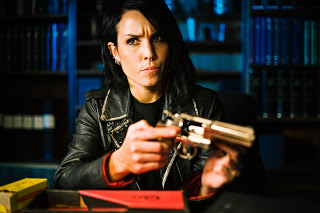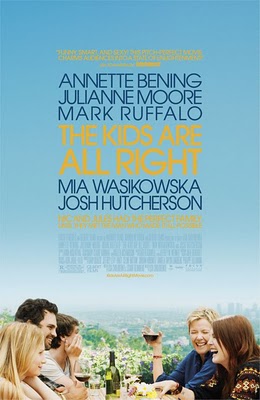Written by Megan Kearns.
When I was young, my mom raised me on classic films: Gone with the Wind, Casablanca, The Great Escape, Breakfast at Tiffany’s. I fondly remember watching Elizabeth Taylor on-screen. Hollywood royalty, we often think of her arresting beauty, numerous marriages, struggle with alcohol, philanthropy and perfume commercials. It’s easy to forget she was an amazing actor; a stellar artist who fluidly exuded strength, sensuality, vitality, passion and pain.Starring in over 50 films, Taylor often chose feminist roles. In National Velvet, she plays a young girl disguising herself as a male jockey to compete. In Cat on a Hot Tin Roof, she’s a fiery survivor embracing her sexuality. And in the Texas saga Giant, she plays an educated and outspoken woman, challenging sexism. So after years of my mother urging me, I finally watched Taylor’s legendary performance in Who’s Afraid of Virginia Woolf?
Based on Edward Albee’s Tony Award-winning play (it also won the Pulitzer although it wasn’t awarded it due to its vulgarity and sexual themes), the 1966 film follows Martha (Elizabeth Taylor) and George (Richard Burton), a middle-aged married couple. He’s an assistant professor at a New England college and she’s his wife who happens to be the college president’s daughter. Through their vitriolic and bitter alcohol-fueled feuding, they lash out at each other. When a young couple, new professor Nick (George Segal) and his wife Honey (Sandy Dennis), visit their house after a late-night party, Martha and George continue their battle of wits, interchangeably attacking their guests and using them as ammunition, to further lash out at one another.
Director Mike Nichols wanted to have real-life married couple Taylor and Burton star in the film, a celebrity couple famous for their off-screen turbulent relationship. Known for its acerbic dialogue, Martha and George sling verbal barbs throughout the movie. Martha continually insults George calling him a “dumbbell,” saying he makes her want to “puke.” Critics often focus on Martha’s vicious verbal attacks but George equals her venom. He says she makes him “sick” and equates her voice to “animal noises.” Their guests Nick and Honey initially appear to be the quintessential couple, contrasting Martha and George in appearance, age and demeanor. But as the night wears on and more alcohol is consumed, the problems both couples face come to the surface.
I’ve read that Who’s Afraid of a Virginia Woolf? is a feminist film. But when I started watching, I initially thought, what the hell? There’s no way this is feminist as it’s mired in misogyny! The film follows George’s perspective as there are scenes with just George and Martha, George and Nick, or George and Honey. George is almost omnipresent. Also, there a few violent scenes in which George attempts to strangle Martha, pushes her, shoves her against a car and pretends to shoot her with a gun (an umbrella pops out instead of a bullet). But when you begin to peel back the layers, you realize that while it might not be an overtly feminist film, feminist tendencies emerge nonetheless.
In the 1960s, the domesticity paradigm for women reigned. In the beginning of the film, Martha tells George about a Bette Davis movie she’s trying to remember the name of. She says, “She [Bette Davis] comes home from a hard day at the grocery store.” George snidely and skeptically replies, “At the grocery store?” to which she retorts, “Yes, the grocery store. She’s a housewife, she buys things.” Women were expected to be docile, obedient wives and mothers tending the home. Yet this revealing exchange shows the disdain for domestic duties women in the 60s faced.
Policing of sexuality also appears. When Martha calls George a floozy in one scene, Honey jovially and drunkenly retorts,
“He can’t be a floozy. You’re a floozy!”
The film makes a subtle commentary of the double standard in sexual conduct between women and men. Men could sleep with whomever they pleased while women who did the same were branded as “sluts.”
A role that earned Taylor her second Oscar, she considered the role of Martha her “personal best.” A bravura performance, Taylor seamlessly sinks into the part; it’s difficult to ascertain where she begins and the character ends. A college-educated woman, Martha perpetually humiliates her husband for his lack of ambition and professional failures:
Martha: I hope that was an empty bottle, George! You can’t afford to waste good liquor, not on your salary, not on an associate professor’s salary!
She pushed George to be the head of the History Department and the head of the university. But why couldn’t she do those things herself? In an exchange with Nick:
Nick: To you, everybody’s a flop. Your husband’s a flop, I’m a flop.
Martha: You’re all flops. I am the Earth Mother, and you are all flops.
In a time when women weren’t supposed to have jobs beyond wife and mother, perhaps Martha wanted her own career. As she came from a wealthy family, Martha had money so she didn’t need George to succeed for fiscal security. It seems as if Martha lived vicariously through her husband and his capacity for success which would explain why his lack of ambition was such a blow.
While the play was written a year before the publication of feminist Betty Friedan’s ground-breaking The Feminine Mystique, the play explores the same issues Friedan railed against. Friedan writes about the “feminine mystique,” where the highest value for women is embracing and maintaining their femininity, and the “problem that has no name,” the unhappiness women faced in the 50s and 60s and their yearning for fulfillment beyond being a housewife and a mother. Friedan argues:
“They [women] learned that truly feminine women do not want careers, higher education, political rights – the independence and the opportunities that the old-fashioned feminists fought for…All they had to do was devote their lives from earliest girlhood to finding a husband and bearing children.” (58)
“Self-esteem in woman, as well as in man, can only be based on real capacity, competence, and achievement; on deserved respect from others rather than unwarranted adulation. Despite the glorification of “Occupation: housewife,” if that occupation does not demand, or permit, realization of women’s full abilities, it cannot provide adequate self-esteem, much less pave the way to a higher level of self-realization…But women in America are no encouraged, or expected, to use their full capacities. In the name of femininity, they are encouraged to evade human growth.” (435-437)
[Warning: Spoilers ahead!!] Motherhood, a reoccurring theme in the film, comprised one of the few ways society allowed fulfillment for women. Both women don’t have children, Martha is unable to and Honey, whose “hysterical pregnancy” led to her marriage with Nick, takes pills to eliminate any pregnancies as she’s scared to conceive. As women were supposed to be good wives and mothers, society viewed reproduction as one of their vital duties. If a woman didn’t have children, ultimately she was a failure. Friedan writes:
“Over and over again, stories in women’s magazines insist that woman can know fulfillment only at the moment of giving birth to a child…In the feminine mystique, there is no other way she can even dream about herself, except as her children’s mother, her husband’s wife.” (115)
As someone in their 30s who doesn’t have children (and isn’t even sure I ever want them), even in this day and age, people often act as if there’s something fundamentally wrong with you if you don’t have or want children. Martha invented the story of a son probably because she genuinely wanted one. But I think she also did it to make it easier for her to fit into society. As a woman, I often feel I don’t fit the stereotypical mold of what a woman “should” be. Perhaps Martha, with her abrasive, obnoxious persona, wanted at least one component of her life to fit. While I genuinely believe Martha wanted a child, her yearning may be tempered by the fact that society views her as an inadequate woman. It’s as if she can handle being a non-conformist woman in every way possible except this one.
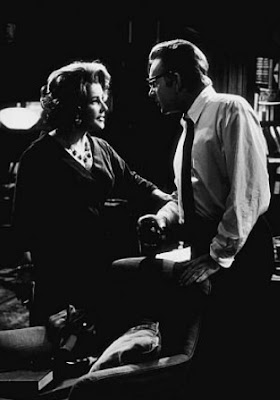
What makes Martha so interesting is that she’s not merely a bawdy, angry woman. Taylor imbues the complicated character with fleeting moments of agony and vulnerability. In a tender rather than simply rage-filled moment, Martha refutes George’s accusation that she’s a “monster.” She asserts,
Martha: I’m loud and I’m vulgar, and I wear the pants in the house because somebody’s got to, but I am not a monster. I’m not.
George: You’re a spoiled, self-indulgent, willful, dirty-minded, liquor-ridden…
Martha: SNAP! It went SNAP! I’m not gonna try to get through to you any more. There was a second back there, yeah, there was a second, just a second when I could have gotten through to you, when maybe we could have cut through all this, this CRAP. But it’s past, and I’m not gonna try.
To me, this is such a pivotal scene. Women are supposed to be, especially during that era, docile, proper and well-mannered; the epitome of femininity. Blond, thin, meek Honey appears to be the perfect wife while bawdy, brash, raven-haired, curvy Martha stands as the complete opposite. In the equally ground-breaking The Second Sex published in 1949, philosopher Simone de Beauvoir wrote about the treatment and oppression of women. In her tome, she argues that society teaches us that passivity is “the essential characteristic of the ‘feminine’ woman.” Society encourages men and boys to explore their freedom while women and girls are taught to embrace femininity, turning their back on what they themselves want. She asserts:
“In woman, on the contrary, there is from the beginning a conflict between her autonomous existence and her objective self, her “being-the-other;” she is taught that to please she must try to please, she must make herself object; she should therefore renounce her autonomy. She is treated like a live doll and is refused liberty.” (280)
Wives were supposed to support their husbands, echoing their desires. While Martha eventually admits that George is the only man who has ever made her happy, she refuses to silence herself. She is loud, vulgar, shrewd, intelligent, assertive, sexual and outspoken; the antithesis to femininity. And in many ways, society punishes Martha and women like her for it. Yet she rails against constraints, struggling to navigate the sexist terrain on her own terms.
The title of the play and film comes from a riff of “Who’s Afraid of the Big Bad Wolf” with the wordplay on Virginia Woolf. It was a quote that playwright Albee saw scrawled on a bathroom mirror in a bar. It’s also an allusion to show that people concoct imaginary scenarios and personas in order to cope with their lives, a theme that runs throughout the entire film. The audience is never quite sure what is fact and what is fiction, the line often blurred.After the pivotal climax and shocking revelations, in the penultimate line of the film, George asks Martha, “Who’s Afraid of Virginia Woolf?” to which she replies, “I am, George, I am.” Some scholars assert that this alludes to being able to live without illusions, which both George and Martha, with their web of lies and treacherous games, clearly find difficult. But the play/film’s title is also an accidental feminist reference as feminist author and writer Virginia Woolf famously advocated for women to be able to possess their own money and space to be creative and ultimately themselves.
Captivating yet uncomfortable to watch, Who’s Afraid of Virginia Woolf? depicts the brutal deterioration of a marriage and the crumbling of hopes, ambitions and illusions. Through their cruel taunts and insults, the film exposes the illusory facades people create, while challenging stifling gender roles.In the 60s (and to a large extent still today), society demanded men act assertively and women behave passively. As men wield a disproportionate amount of power over women, people often fear female empowerment. Despite her brazen outspokenness, Martha might be afraid too — afraid of her own power in a society that doesn’t embrace or accept powerful women.
———-
Megan Kearns is a blogger, freelance writer and activist. A feminist vegan, Megan blogs at The Opinioness of the World. In addition to Bitch Flicks, her work has appeared at Arts & Opinion, Italianieuropei, Open Letters Monthly and A Safe World for Women. Megan earned her B.A. in Anthropology and Sociology and a Graduate Certificate in Women and Politics and Public Policy. She currently lives in Boston. She previously contributed reviews of The Kids Are All Right, The Girl with the Dragon Tattoo, The Girl Who Played with Fire, The Girl Who Kicked the Hornet’s Nest and Something Borrowed to Bitch Flicks.
 I know I’m being hard on the show. Despite its gender problem (and race problem – very few people of color are characters, except for the Dothraki who are depicted as “primitive” and “savage,” a common racist trope) it is absolutely fantastic and amazing. By the 4th episode I was hooked, eager to see what would happen next. But a show so meticulously made of such stellar caliber shouldn’t suffer from so much sexism. I shouldn’t have to overlook excessive misogyny in order to watch TV. The show seems to remain incredibly faithful to its source material. Interestingly, George R.R. Martin wrote the first book, entitled Game of Thrones, from the perspective of 9 different characters (Will of the Night’s Watch, Lord Eddard Stark, Lady Catelyn Stark, Jon Snow, Arya Stark, Sansa Stark, Bran Stark, Tyrion Lannister, Daenerys Targaryen), half from the vantage of the female characters. As delighted as I am with myriad strong heroines, a show devoid of female writers (save for Jane Espenson who co-wrote one episode), directors or producers, can’t help but feel like a testosterone extravaganza.
I know I’m being hard on the show. Despite its gender problem (and race problem – very few people of color are characters, except for the Dothraki who are depicted as “primitive” and “savage,” a common racist trope) it is absolutely fantastic and amazing. By the 4th episode I was hooked, eager to see what would happen next. But a show so meticulously made of such stellar caliber shouldn’t suffer from so much sexism. I shouldn’t have to overlook excessive misogyny in order to watch TV. The show seems to remain incredibly faithful to its source material. Interestingly, George R.R. Martin wrote the first book, entitled Game of Thrones, from the perspective of 9 different characters (Will of the Night’s Watch, Lord Eddard Stark, Lady Catelyn Stark, Jon Snow, Arya Stark, Sansa Stark, Bran Stark, Tyrion Lannister, Daenerys Targaryen), half from the vantage of the female characters. As delighted as I am with myriad strong heroines, a show devoid of female writers (save for Jane Espenson who co-wrote one episode), directors or producers, can’t help but feel like a testosterone extravaganza.











